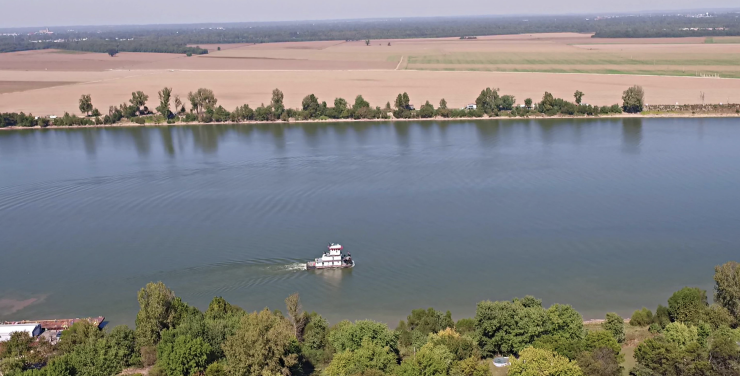Kentucky is set to launch the first phase of an Ohio River toll bridge that will connect the state to Indiana and serve as a critical link in an interstate highway connecting Mexico and Canada.
The
The new span is supposed to be a key connection in the National I-69 Corridor, which runs from Michigan’s Canadian border to Texas’ Mexican border.

Officials say they expect it to spark population growth, jobs and economic activity. Indiana projects the completion of I-69 will generate $4 billion of new economic activity in its state.
“In the end, this may be what helps the Midwest and Indiana in particular rise to the top and become one of the most competitive states in the nation,” said David Audretsch, a professor in the Paul. H. O’Neill School of Public and Environmental Affairs at Indiana University.
It will be the second major project this century linking the two states across the Ohio River.
The $2.6 billion
It marked the single largest public infrastructure project to date undertaken by Kentucky. The states equally share toll revenue. The Downtown Crossing and Lewis and Clark bridges opened in 2016.
For the new project, Kentucky expects to start work on the first phase — which will not feature any bonds — early next year after it won Federal Highway Administration approval in September of the Final Environmental Impact Statement and Record of Decision.
“Both Indiana and Kentucky have invested a lot of time and money into the I-69 corridor and the I-69 Ohio River Crossing will be a vital, connecting link between the states,” said Mindy Peterson, a spokesperson for the I-69 Ohio River Crossing. “Geographically, western Kentucky and the Evansville area are in a very sweet spot in a central location with convenient travel time across the country. The I-69 work in both states, the final connection of the I-69 Ohio River Crossing and the eventual national corridor are expected to help the area leverage a number of future opportunities for growth and development.”
The financing for the first phase, which totals $237 million and involves new road construction on the Kentucky side to the new bridge's location, comes from already allocated federal and state funds in Kentucky’s 2020-2026 road funding program.
The second phase of the project, in which the actual bridge would be built, will carry the big price tag, estimated to cost $1 billion.
Construction is tentatively set to begin in 2027, but the states are hoping to move that forward if they can snag federal funding.
A financial structure for the second phase is yet to be determined. It also remains to be seen whether the states will opt for a public-private partnership, which Indiana has used with mixed results for related projects.
The Hoosier State relied on a P3 for the East End Crossing, which has been considered a success.
But the state was forced in 2017 to step in and dissolve a P3 that had been set up for a section of the I-69 project after construction delays, cost disputes and the private partner’s financial problems put the bonds on track for default. As part of the resolution, the Indiana Finance Authority issued $180 million of highway revenue bonds to redeem the original $240 million private activity bond borrowing in 2014.
Kentucky used a more traditional municipal bond financing to finance the Downtown Crossing across the Ohio at Louisville.
Both states have the statutory authority to enter into P3 agreements. The Kentucky Transportation Cabinet has yet to deliver a P3 project. The KYTC’s financial advisor, PFM, has experience with P3s, the agency noted in a September Ohio River Crossing financial report.
The KYTC will issue a final RFP next week and a team is expected to be announced by mid-December, Peterson said. The work will extend I-69 by six miles and feature new interchanges. The new toll bridge will replace a pair of bridges that now carry U.S. Highway 41 across the river. One of the bridges will remain open as a non-tolled alternative.

I-69 will eventually run for 1,660 miles across the country. The road currently consists of 10 nonconnected segments, with progress varied depending on the state.
In Kentucky, more than 100 miles of parkway have been upgraded for the I-69 project. The state will work with Tennessee to convert another 20 miles of parkway into I-69 in the southern part of the state, Peterson said.
Indiana is in the sixth and final stage of its I-69 project, which connects the capital, Indianapolis, to Evansville, and is expected to carry a total price tag of $4 billion. The full highway is set to open by the end of 2024.
Parts of southern and central Indiana have struggled for years with brain drain and lack of jobs, said Audretsch.
“This is a long-term investment that’s going to help transform the state and a lot of the southern and central Indiana problems are going to look a look better down the road,” Audretsch said. "A lot of companies who are going to make decisions about where to locate, suddenly Indiana is going to look more attractive.”





